Dogs have an extraordinary sense of smell, far beyond anything humans can imagine. With over 200 million scent receptors compared to our modest five million, certain dog breeds are born with noses that can trace scents across miles and hours. Some even come equipped with “scenting tools” like long, floppy ears that stir scent particles from the ground and wrinkled skin that helps trap those particles as they track. It’s no surprise that tracking dogs have long been valued for their unique abilities.
From ancient times to modern search-and-rescue missions, dogs have worked alongside humans to hunt, locate, and recover. Whether you’re a hunter, a hiker, or someone who simply admires the skill of a good sniffer, a tracking dog brings energy, stamina, and intense focus to the job. These breeds excel because they are strong, trainable, and highly driven.
In this article, we’ll explore some of the best dog breeds for tracking, whether you’re following wildlife, locating lost persons, or just marveling at the power of the canine nose.
Tracking Dog Breeds
1. Bloodhound
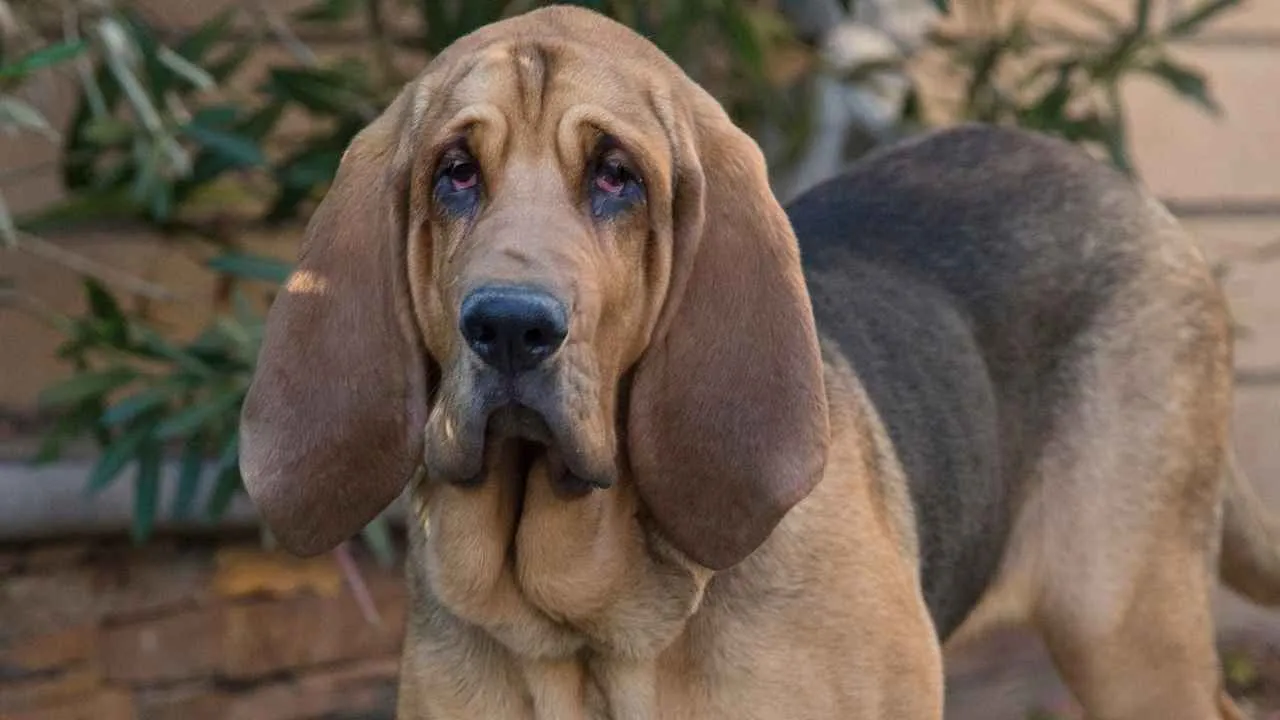
The Bloodhound, also known historically as the “Sleuth Hound”, is one of the oldest scent-tracking breeds, with roots tracing back to at least 1066 BC. Originally bred by medieval noblemen and monks for hunting deer and boar, this iconic breed stands 23 to 27 inches tall and can weigh up to 110 pounds.
Bloodhounds are instantly recognizable by their droopy, wrinkled faces, loose-hanging skin, and massive, low-slung ears. Their deep-set eyes lend a soulful, almost noble expression, and their coats come in red, black, and tan, or liver and tan.
Unique Traits
Bloodhounds possess the most powerful sense of smell in the canine world, capable of trailing scents across miles and over challenging terrain. According to the AKC, the Bloodhound is known for being independent, sociable, and naturally curious.
Their long ears and facial wrinkles help trap and funnel scent toward their nose. While calm and affectionate off duty, these determined trackers become intensely focused once on a scent trail. They are social animals, thrive in pack environments, and do best with regular exercise and structured training.
Fun Fact: A Bloodhound’s scent evidence is so reliable, it has even been accepted in a court of law.
2. Basset Hound
The Basset Hound, known for its distinctive appearance and deliberate pace, is a tracking specialist with French origins. Standing no taller than 14 inches and weighing between 40–65 pounds, this breed carries a surprisingly solid build, with strong legs and oversized paws that support long hours on the trail.
Basset Hounds are a favorite among scent hound enthusiasts. Their signature long, velvety ears and wrinkled skin help funnel and trap scents directly toward their powerful noses, second in tracking ability only to the Bloodhound.
Unique Traits
Basset Hounds are exceptionally calm trackers. PetMD states that Basset Hounds are typically easygoing and sociable dogs with a friendly temperament. Their patient and steady approach allows them to stay focused without being easily distracted.
With fewer scent receptors than a Bloodhound but nearly as effective, their success comes from anatomical features: low-slung bodies that keep their noses close to the ground, droopy skin that holds scent particles, and ears that sweep scent up toward their face.
Despite their laid-back personalities, they possess a persistent and sometimes stubborn nature when following a scent.
Fun Fact: Basset Hounds descend from a centuries-old bloodline of expert trackers and remain one of the most iconic scent hounds in the world.
3. Redbone Coonhound
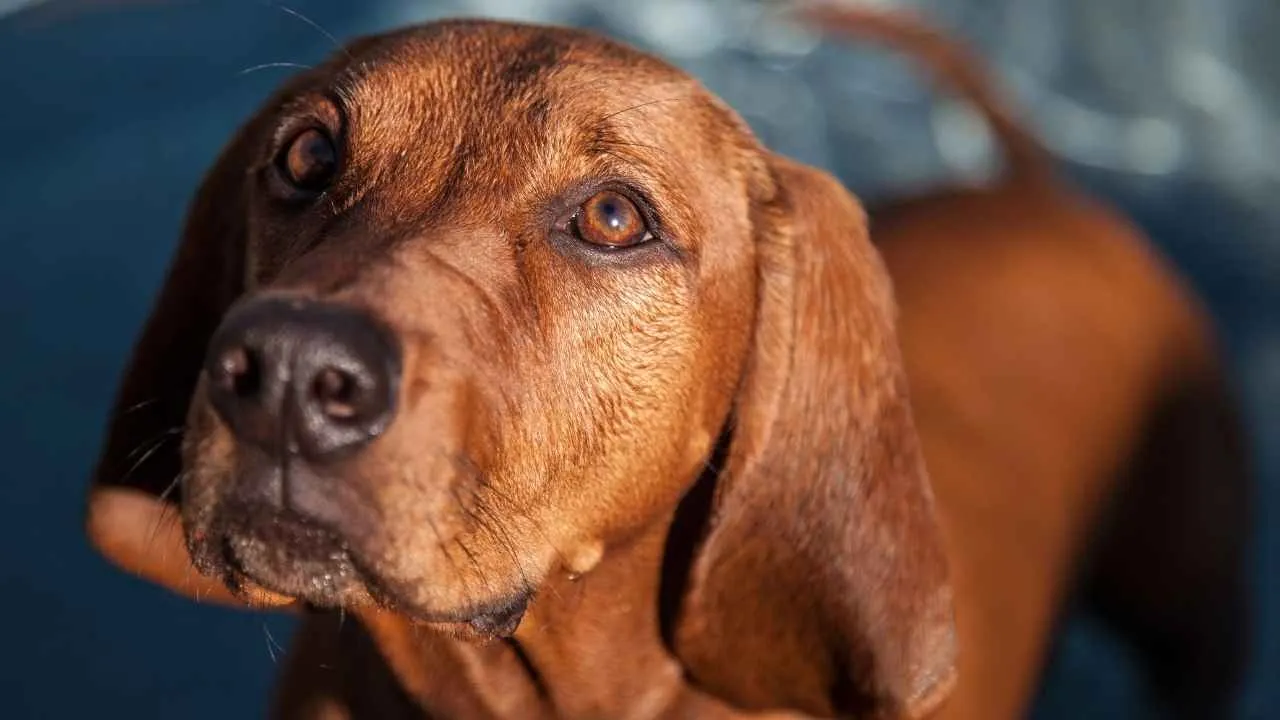
With its rich mahogany-red coat and sleek, muscular frame, the Redbone Coonhound is a striking scent hound bred for endurance and precision. WebMD reports that Redbone Coonhounds are intelligent and protective dogs, originally bred for hunting.
Developed in the United States from a mix of Bloodhounds and Foxhounds, this medium-to-large breed stands around 21–27 inches tall and weighs between 45–70 pounds. Redbones are known for their melodic vocalizations, long drooping ears, and expressive, pleading brown eyes.
Their name comes from their unique ability to chase raccoons up trees, a skill honed by generations of tracking on rugged terrain.
Unique Traits
Redbone Coonhounds are energetic, intelligent, and affectionate. While they can be independent and sometimes stubborn during training, their loyalty and friendly demeanor make them excellent companions.
These dogs thrive on vigorous physical activity such as hunting, hiking, or swimming, and are most content when given a job. At home, they’re gentle with children and get along well with other dogs, balancing intense work drive with mellow downtime.
Fun Fact: Redbone Coonhounds were sculpted through generations of selective breeding to move swiftly and confidently across punishing landscapes, from swamps to mountains.
4. American Foxhound
Bred in colonial America from English Foxhounds, the American Foxhound was originally used for fox hunting and later adapted for deer tracking. With its long legs, narrow chest, and arched loin, this breed is built for stamina and speed.
Standing 21–25 inches tall and weighing between 60–70 pounds, these hounds are usually tri-colored, black, tan, and white. Their pleading, soft eyes and domed skull give them a gentle, expressive appearance.
Purina mentions that the American Foxhound is a gentle and laid-back breed that typically gets along well with children and other pets.
Unique Traits
American Foxhounds are relentless scent trackers. Unlike other breeds of hounds, they don’t rely on floppy ears or wrinkled skin to trap scent, just sheer drive and a powerful nose. They are extremely energetic, affectionate, and thrive on outdoor activity.
Their determination means they’ll follow a scent for miles, often ignoring distractions. While low-maintenance in grooming, they do require significant daily exercise and can be vocal with their signature “bawl.” Their independence can pose a challenge for inexperienced owners.
Fun Fact: Closely linked with the early history of the U.S., American Foxhounds are associated with Revolutionary War heroes and the estates of old Virginia.
5. Beagle
The Beagle is a small but mighty scent hound with an impressive legacy in the world of tracking. Originally bred in England for hunting small game, especially rabbits, Beagles remain one of the most popular breeds in the U.S. due to their charming personality and sharp nose.
They come in two size varieties: under 13 inches tall and between 13–15 inches, typically weighing 20–30 pounds. Beagles are known for their tricolor coats, long droopy ears, and expressive brown or hazel eyes.
Unique Traits
Beagles are driven by their sense of smell, second only to the Bloodhound. Their short stature helps keep their nose close to the ground, and their tenacity keeps them on scent trails for hours.
Bred to work in packs, they thrive with company and are happiest when surrounded by people or fellow dogs. Playful, clever, and full of stamina, Beagles are excellent trackers who balance their sharp instincts with a fun-loving spirit.
Fun Fact: Thanks to their merry nature and strong nose, Beagles have long been favorites for tracking work and remain one of the most beloved hounds in American households.
6. German Shorthaired Pointer
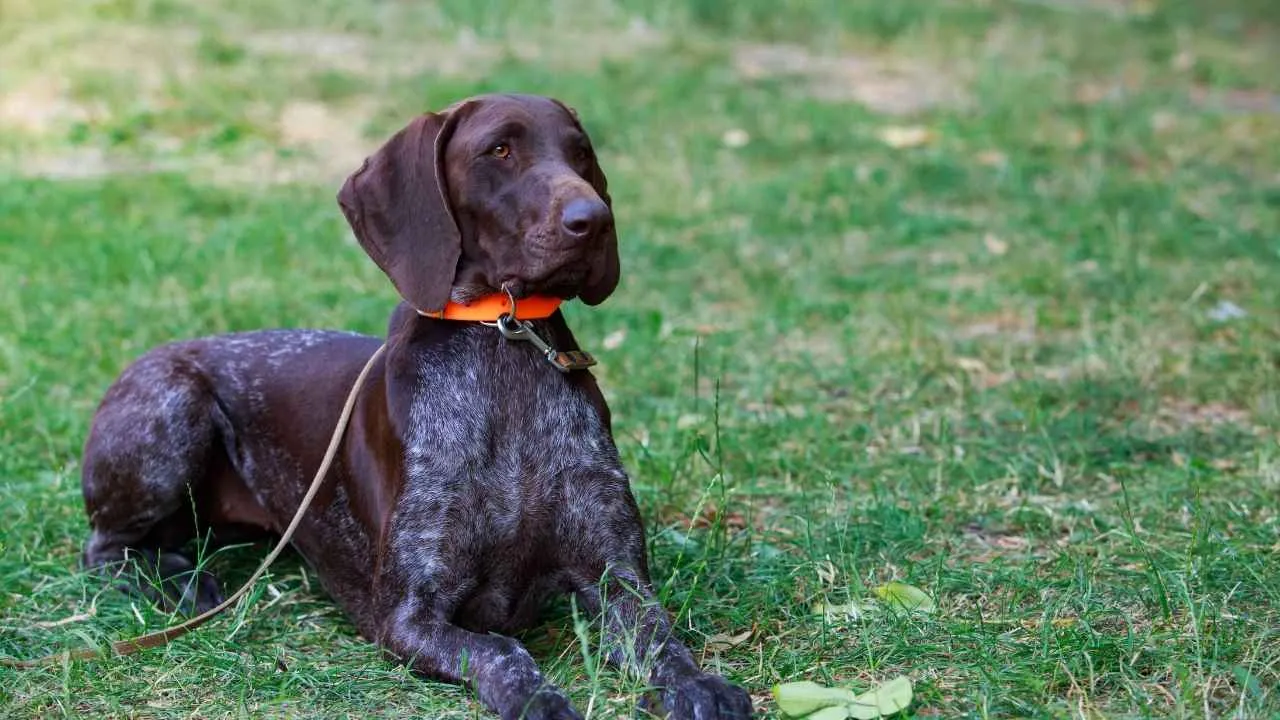
The German Shorthaired Pointer, commonly referred to as GSP, is a versatile and athletic breed originating from Germany. They become great family dogs. Known for its sleek, noble appearance, the GSP typically stands 23–25 inches tall and weighs between 55–70 pounds.
These dogs boast a distinctive liver or liver-and-white coat, paired with dark, expressive eyes and floppy ears that aid in scent tracking. They are prized for their ability to track, point, and retrieve, a true all-rounder in the field. Originally bred as gun dogs, their loyalty and energy also make them devoted companions.
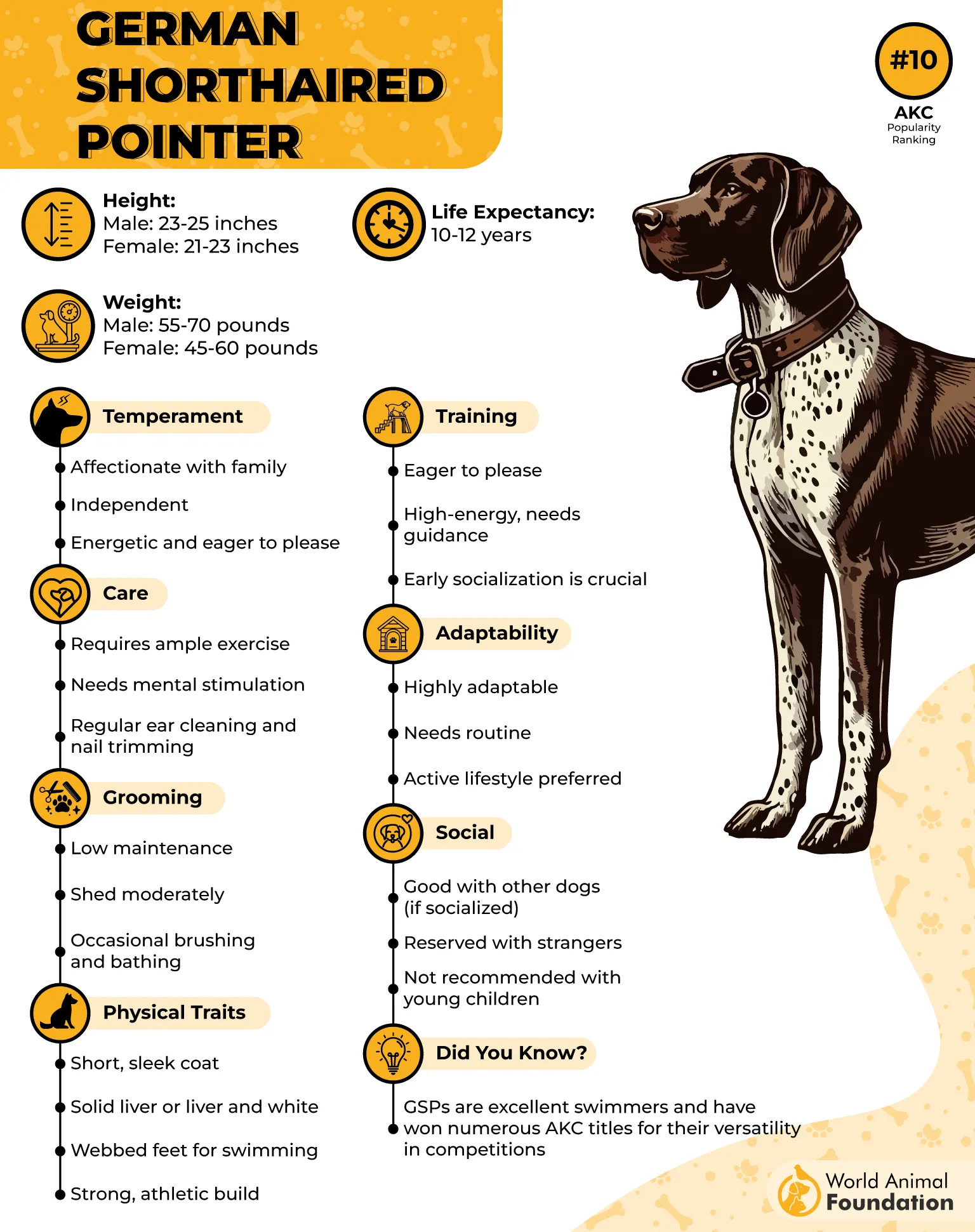
Unique Traits
These hunting dogs are known for their endurance, agility, and intelligence, making them ideal tracking dogs. With a strong prey drive and a need for vigorous activity, they thrive in environments where they can run, swim, and perform mentally stimulating tasks. Their eagerness to learn and work closely with humans makes training both effective and enjoyable.
Fun Fact: The German Shorthaired Pointer’s powerful nose and boundless energy allow it to track game on land or in water, making it one of the most versatile hunting breeds in the world.
7. German Shepherd
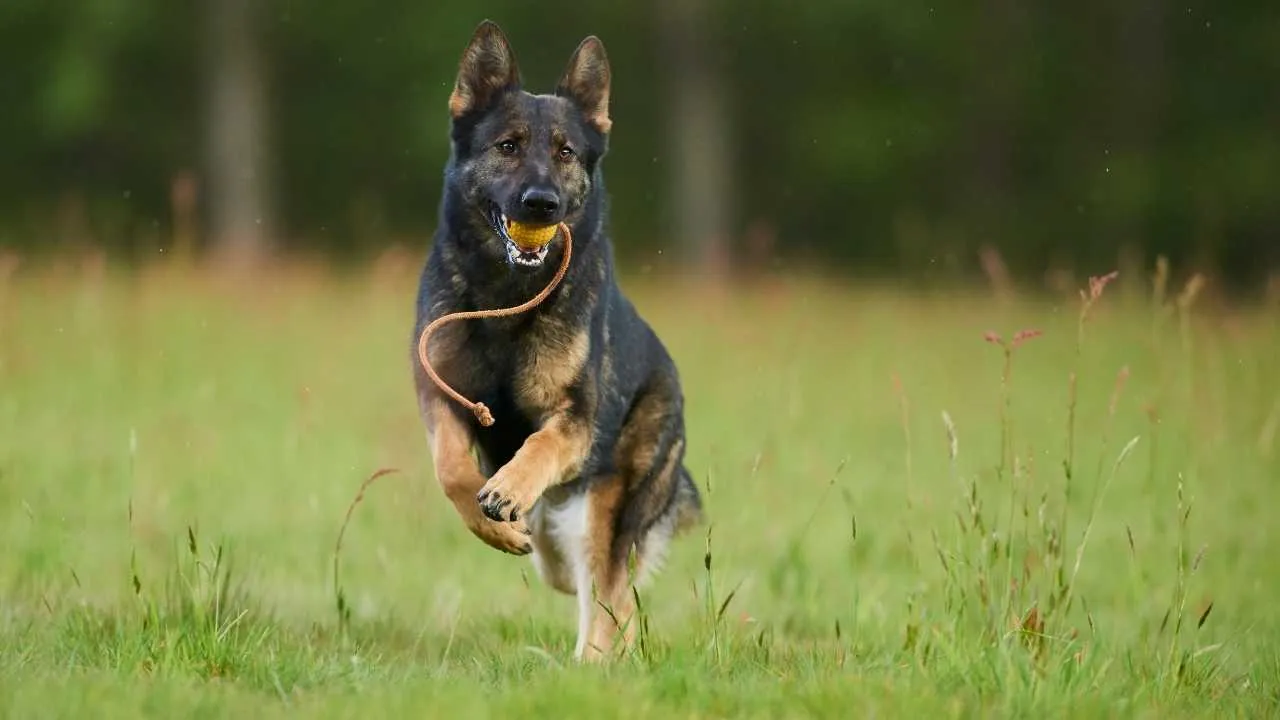
Also known as the Alsatian, the German Shepherd is a large, powerful breed that originated in Germany, developed from traditional herding and farm dogs. They are among the best tracking dogs. These smart dogs typically stand between 22–26 inches tall and weigh 50–90 pounds.
Known for their dense, double-layered coats that range in shades like black and tan or sable, German Shepherds are as striking as they are capable. With a noble build, confident posture, this breed is widely admired for its versatile working abilities.
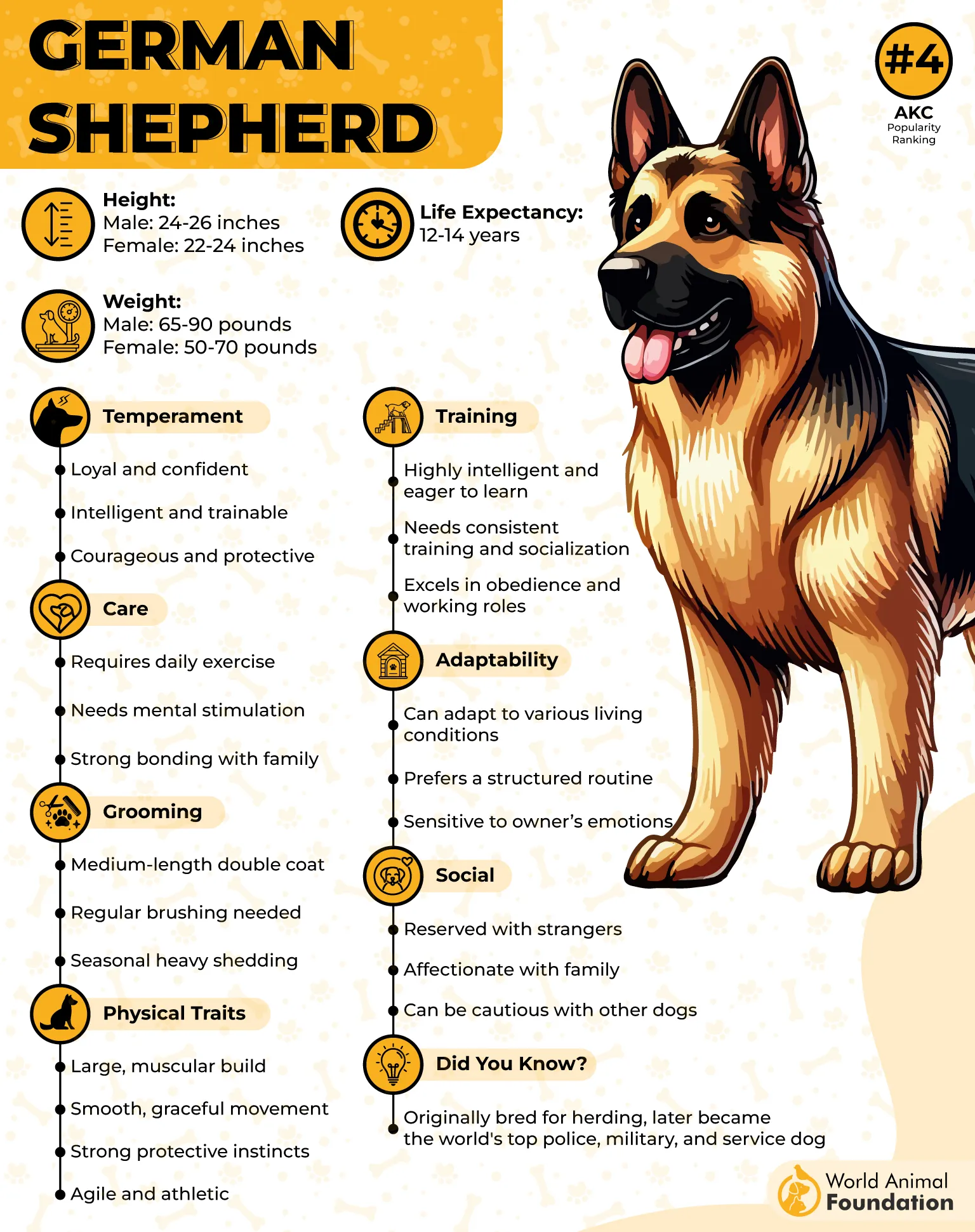
Unique Traits
German Shepherds are among the most intelligent and obedient of all dog breeds, excelling in scent work, agility, and protection. Their natural alertness and trainability make them excellent for military and police work, especially in search-and-rescue and detection missions.
They possess a keen sense of smell and a strong sense of duty, often willing to risk their own safety to protect or locate others. Their character, marked by loyalty, courage, and sharp instincts, is what sets them apart.
Fun Fact: A German Shepherd named Orient helped Bill Irwin, a blind man, become the first to hike the Appalachian Trail without sight in 1990.
Conclusion
Whether you’re planning a hunting trip, working in search and rescue, or simply fascinated by the power of a dog’s nose, understanding breed characteristics is key to finding the right canine companion. Dogs like the German Shepherd stand out for their intelligence, endurance, and loyalty. But they’re not alone, bird dogs such as the Golden Retriever and Labrador Retriever are equally prized for their tracking instincts, especially when it’s time to hunt birds or locate a wounded deer in the wild.
While many breeds possess natural scenting abilities, what sets excellent tracking dogs apart is their trainability, drive, and stability. You want a dog that’s focused, determined, and reliable, not one prone to the unpredictability of aggressive dogs. From sprawling fields to dense forests, tracking dogs are a hunter’s best partner and a handler’s most trusted tool. These remarkable breeds combine sensory skill with heart, making them an essential asset for those who rely on precision and instinct.

